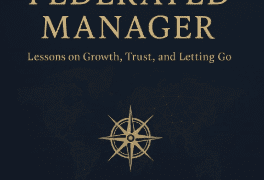Today, managing money can feel complicated, and both people and organizations are looking for the best ways to keep their finances strong. This is where asset management can help. It provides different services that help clients grow their money, stay safe from big risks, and make smart choices about investing.
But what does asset management really mean, and how can it help you? Let’s explore this in the article.
Understanding Asset Management
Asset management refers to the systematic approach of managing investments on behalf of clients to achieve their financial goals. This can include various asset types such as
- stocks
- bonds
- real estate
- alternatives like private equity
Asset managers are responsible for creating tailored investment strategies. It manages portfolios and provides ongoing oversight to ensure that the client’s financial objectives are met.
Wealth Growth
At its core, asset management aims to grow the client’s wealth over time through prudent investment strategies. Professional managers employ a range of strategies. From growth investing to value investing, tailored to market conditions and the client’s risk tolerance.
Risk Minimization
Investing always comes with some risk, but good asset management can help lower it by using diversification. This means spreading money across different types of investments and locations, so if one does poorly, others can balance it out. This strategy helps keep your money safer in the long run.
Expert Guidance
Clients benefit from expert insights and market analyses provided by experienced asset managers. Their knowledge of market trends, economic indicators, and industry shifts enables clients to make informed decisions. For instance, an asset manager can advise clients on the best times to enter or exit specific markets.
Long-Term Investment Strategies
When it comes to investing, a long-term perspective often yields the best results. Asset management firms employ several strategies that focus on sustained growth over time:
- Rebalancing
Rebalancing means adjusting the mix of investments from time to time to match the original plan. For example, if stocks grow too much compared to other investments, some shares may be sold to keep things balanced. This helps manage risk and keeps the portfolio on track.
- Value Investing
Value investing is when asset managers look for stocks that seem undervalued but have strong financial health. The idea is to buy these stocks at a lower price and hold them for long-term growth. This strategy helps investors take advantage of good opportunities in the market.
Customized Financial Services
Asset management covers many financial services that help people handle their money wisely. These services include
- retirement planning
- estate planning
- tax strategies
- investment advice
These are all designed to fit each client’s needs. For example, in retirement planning, asset managers help create strategies so clients can have enough income to live comfortably after they stop working.
They also focus on tax optimization by using smart tax strategies. For example, tax-efficient funds, to reduce the amount of taxes paid and increase overall returns.
Choosing the Right Asset Manager
Selecting the right asset management firm is a critical step in your financial journey. Aspects to consider include:
- Experience
- Fee Structure
- Services Offered
For example, companies like Abacus focus on giving full financial support and guidance. Once you find a suitable partner, the collaboration can lead to improved outcomes over time as both parties adapt to changing financial landscapes.
Innovation in Asset Management
Technological advancements are shaping the asset management industry. The rise of artificial intelligence (AI) and machine learning has transformed how investment strategies are developed and executed. For instance, algorithms can analyze vast datasets to identify patterns and trends that human analysts might miss. Modern asset management systems also benefit from tools like fixed asset tracking and depreciation software, such as those offered by xAssets, which help organizations maintain accurate records and optimize asset lifecycle management.
Additionally, robo-advisors have democratized access to asset management services by enabling individuals with lower investment thresholds to benefit from professional guidance. These platforms typically offer automated portfolio management based on individual risk profiles and investment goals.
A Broader View on Risk Management
Risk management is an important part of asset management because it helps protect investments. It means finding, checking, and prioritizing risks to lessen their impact.
For example, many firms use numbers and data (quantitative analysis) to study risks and possible returns. This helps clients make smarter choices.
They also do stress testing. This checks how investments might react during tough market conditions, so they can adjust plans if needed. By doing these things, asset managers can handle market ups and downs while keeping their clients confident and secure.
The Role of Communication
Effective communication between asset managers and clients is vital. Regular updates, reports, and discussions keep clients informed about their portfolios’ performance and any necessary adjustments.
Moreover, transparency helps build trust. It makes clients feel more secure about their financial decisions. Establishing periodic review meetings can enhance visibility and facilitate a collaborative approach to managing investments.
Future Trends in Asset Management
In the future, asset management will keep changing because of new rules, market shifts, and better technology. One big trend is ESG investing. This means focusing on environmental, social, and governance factors.
More people want their money to support companies that care about the planet and society. Another trend is automation, where technology helps manage investments more quickly and easily. This is especially appealing to younger clients who are comfortable with tech.
Even as these changes happen, asset managers will still focus on helping clients grow their wealth while keeping risks under control.
Connecting with Comprehensive Financial Services
Asset management often works together with other financial services to help people reach their money goals. For example, financial planning creates a roadmap that includes
- saving
- spending
- investing wisely
Insurance services are also important because they help protect wealth and reduce risks through different insurance products. When asset management is part of a bigger financial plan, clients can feel more secure and reach their goals more effectively.
Your Path Forward
Working with asset management can help people grow their money and make smarter choices that fit their own financial needs. By understanding how asset management works, both individuals and organizations can handle their money better. If you want to reach your financial dreams, it’s a good idea to explore asset management services that match what you need.
For more informative tips, check out our blog posts.



































